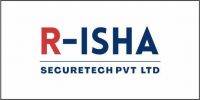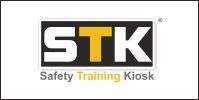 In today’s complex emergency response landscape, effective incident management is critical to ensuring coordinated, efficient, and life-saving operations. The evolution of incident management technology has transformed emergency response, replacing outdated paper-based methods with advanced digital solutions. The shift from whiteboards, paper charts, and tag-based systems to cloud-based, real-time, and automated incident management tools has revolutionized how first responders operate.
In today’s complex emergency response landscape, effective incident management is critical to ensuring coordinated, efficient, and life-saving operations. The evolution of incident management technology has transformed emergency response, replacing outdated paper-based methods with advanced digital solutions. The shift from whiteboards, paper charts, and tag-based systems to cloud-based, real-time, and automated incident management tools has revolutionized how first responders operate.
 Selecting the right Emergency Incident Management System (EIMS) can significantly enhance the ability of incident commanders, fire departments, law enforcement agencies, and emergency medical teams to track resources, manage assignments, and improve overall situational awareness. However, with a variety of options available, it’s essential to consider key features that will ensure maximum efficiency and usability.
Selecting the right Emergency Incident Management System (EIMS) can significantly enhance the ability of incident commanders, fire departments, law enforcement agencies, and emergency medical teams to track resources, manage assignments, and improve overall situational awareness. However, with a variety of options available, it’s essential to consider key features that will ensure maximum efficiency and usability.
This guide highlights six crucial features that should be prioritized when selecting an incident management system, ensuring seamless integration into daily operations and preparedness for large-scale incidents.
- Accurate Resource Tracking and Management
One of the most essential functions of an EIMS is the ability to assign, track, and manage resources efficiently. The system should allow an incident commander to quickly assign tasks, monitor unit locations, and update resource availability with just a few clicks.
Key Features to Look For:
Real-time unit tracking with GPS integration, Automated task assignment for firefighters, police, and EMS units, Dashboard visibility for incident commanders to monitor team status, Resource allocation analytics to optimize response efforts
By implementing an automated resource tracking system, first responders can reduce response time, improve efficiency, and enhance operational safety.
- Customizable Assignment Templates
For emergency response teams that frequently deal with recurring incident types (e.g., structure fires, vehicle collisions, hazardous material spills), having pre-set assignment templates can significantly reduce response time and enhance operational efficiency.
Benefits of Assignment Templates:
Standardized incident workflows for different emergency types, Faster deployment of critical tasks based on incident type, Pre-loaded response checklists to ensure no step is missed, Reduction in human error and improved coordination
A well-designed system allows incident commanders to set up and modify templates for different scenarios, ensuring that all essential tasks are covered systematically.
- Integrated Running Clocks for Time-Sensitive Decisions
During critical incidents, time is of the essence. Having a running clock integrated into an EIMS can provide essential time tracking for air supply monitoring, building collapse risks, and rescue operations.
Key Features:
Elapsed time tracking for key benchmarks (e.g., “water on fire,” “search complete”), Pre-set alerts and notifications for critical time-sensitive tasks, Automatic time stamps for decision-making and report generation Real-time time tracking ensures that firefighters, medics, and law enforcement officers remain aware of crucial timelines, enabling better situational awareness and decision-making.
- Incident Logs with Automated Time Stamps
A well-documented incident log is crucial for post-incident analysis, reporting, and training. Modern EIMS solutions come with automated, time-stamped logs to accurately record key decisions and actions.
Why It’s Important:
Enhances post-incident reporting and analysis, Supports legal compliance and audits, Reduces administrative workload by eliminating manual data entry, Prevents data loss with cloud-based storage These logs not only improve post-incident debriefings but also serve as valuable data points for refining future response strategies.
- Access to Pre-Incident Planning Data
Having pre-incident plans readily accessible within the incident management system is vital for improving response effectiveness and safety. These plans should include building layouts, hazardous material information, evacuation procedures, and key contacts.
What to Look For:
Cloud-based document storage for quick retrieval. GIS mapping tools for real-time geographic data. Integration with CAD (Computer-Aided Dispatch) systems, Customizable checklists and ICS (Incident Command System) forms Access to critical site-specific data allows responders to make informed decisions, reducing risks and improving coordination between multiple agencies.
- Map-Based Command Boards for Enhanced Situational Awareness
Modern EIMS platforms incorporate map-based dashboards, allowing incident commanders to visualize resource locations, incident sites, and tactical operations in real time.
Key Benefits:
- Live GPS tracking of emergency units
- Layered mapping tools to display hydrant locations, evacuation zones, and hazards
- Real-time drone and satellite feeds for aerial situational awareness
- Seamless integration with GIS and dispatch systems
By using a map-based command interface, incident commanders can quickly assess and adapt their strategies to dynamic situations, ensuring optimal resource allocation and operational efficiency.
The Future of Emergency Incident Management: Cloud-Based Systems
The rapid evolution of technology has led to the widespread adoption of cloud-based EIMS solutions, offering unparalleled accessibility, scalability, and integration capabilities.
Advantages of Cloud-Based Systems:
- Access from any device (smartphones, tablets, desktops)
- Secure, real-time data sharing among responding agencies
- Instant updates and software improvements without on-site maintenance
- Seamless integration with AI-driven analytics and predictive modeling
The transition to cloud-based incident management systems enables emergency response teams to leverage cutting-edge technology for faster, safer, and more coordinated incident responses.























































